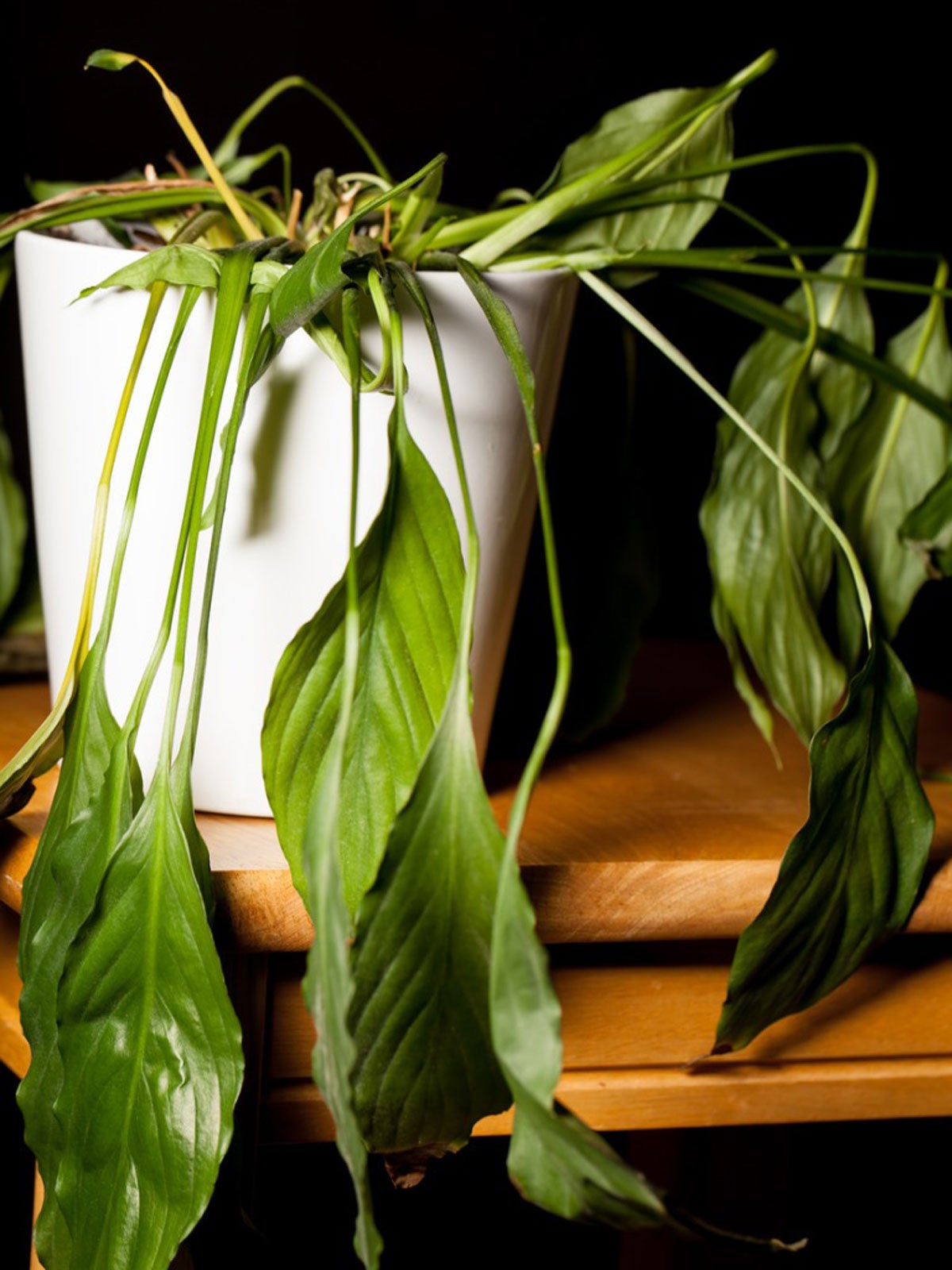Drooping Peace Lily: How To Revive A Wilting Spathiphyllum
A drooping peace lily is a common occurrence and can indicate several different issues, most of which can be corrected.

Why You Have A Drooping Peace Lily – And How You Can Save It
Peace lilies are beloved for their ease of growth and beauty. However, they’re not entirely without certain needs and care, and we often hear our readers asking, “Why is my peace lily drooping?”
Many issues with the peace lily manifest first in the form of drooping or wilting. If you see that your peace lily is drooping it is undoubtedly a cause for concern, but some instances may be more serious than others.
Pests and Diseases That Can Cause Drooping
Common Peace Lily Pests
The presence of insects only rarely result in wilting peace lily plants. However, this may occur when the infestation becomes severe. The most common indoor pests include those like mealybug and scale. You can help prevent losing your plant to these nuisance insects by routinely checking plants for changes in appearance and monitoring their foliage closely. Once numbers of insects have become established, insecticidal soaps or other treatments may be needed.
Common Peace Lily Diseases
Root and stem rot are among the most frequent causes of wilting in peace lilies. Rot, as well as other fungal infections, is likely to occur with consistent overwatering or in soils that drain poorly. Prevention is important since affected plants are unlikely to recover. When planting, always make certain that pots and containers drain well, allowing water to move freely. As a general rule, peace lilies should be watered only when the surface of the soil has dried.
Cultural Causes For Drooping Peace Lily
Underwatering and Overwatering
Sign up for the Gardening Know How newsletter today and receive a free copy of our e-book "How to Grow Delicious Tomatoes".
Improper watering is the leading cause of drooping peace lily leaves. Though it’s considered good practice to allow the container to dry slightly between waterings, excessively dry soils will cause the plant to wilt quickly. The same can also be said for overwatering, in which oversaturated containers lead to a rapid decline in your plant’s health.
Light, Warmth and Humidity
Peace lily plants are known for their ability to flourish under low-light conditions. However, inadequate light can lead to an overall loss of vigor. This includes drooping or a wilted appearance. The same can also be said for sudden changes in temperature or humidity. As the plant is quite tender, dips below approximately 60F (15C) may result in damage to the houseplant, causing it to wilt.
Missing Nutrients in Soil (Feeding)
Routine feeding helps to keep peace lilies looking their best. Yellowing leaves are among the first signs that there may be a nutrient deficiency within the soil. Drooping may also occur. Use balanced, liquid feeds that have been specifically formulated for use with houseplants. For safe use, fertilizers should be used only according to the manufacturer’s labeled instructions. This will help to prevent overfeeding, which can often result in further damage to plants.
Being Pot Bound / Root Bound
Drooping lily flowers often happen when plants have become root-bound. Pot-bound plants are likely to dry more quickly between waterings. They will often show roots that begin to emerge from the top and/or drainage holes of containers. To maintain the plant’s health when this happens, repotting will be necessary.
Before beginning the repotting process, each lily should be watered well and allowed to rest for several hours to ensure that the plant is well-hydrated. Plants can then be removed from their container with the root ball intact. Any circling roots should be loosened or teased free. Lilies should be positioned into pots that are at least one size larger and filled with a quality growing medium.
Are Certain Peace Lilies More Sensitive?
Though most varieties of peace lily will behave similarly, growers may find minor differences between types. Considering the varying characteristics of each cultivar is key in determining which will grow best in your own home. In general, mature plants are likely to be much more resilient. New plantings or those that are smaller require special attention throughout their period of establishment to prevent wilt.
Frequently Asked Questions
Will a Droopy Peace Lily Recover?
Drooping in peace lily plants is most commonly caused by cultural conditions. In these cases, the plants are likely to recover, provided that their conditions for growth have improved. Should growers discover that their plants have wilted; factors such as temperature, light, soil nutrient levels, and water should each be considered carefully.
When is it Too Late to Save a Peace Lily?
In more serious instances of wilting, peace lily plants may be difficult to save. This is especially true of plants that have been affected by disease or large numbers of pests. Still, as a caring houseplant parent, you can attempt to preserve their favorite plants by quickly diagnosing the problem and determining the best course of treatment to move forward.

Tonya Barnett has been gardening for 13 years. Flowers are her passion. She has transformed her backyard into a cut flower garden, which she regularly chronicles on her YouTube channel http://www.youtube.com/@tonyawiththeflowers.

